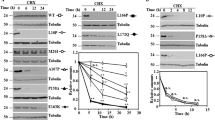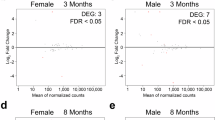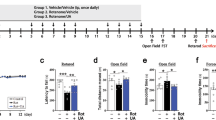Abstract
Mutations in PARK7 DJ-1 have been associated with autosomal-recessive early-onset Parkinson's disease (PD). This gene encodes for an atypical peroxiredoxin-like peroxidase that may act as a regulator of transcription and a redox-dependent chaperone. Although large gene deletions have been associated with a loss-of-function phenotype, the pathogenic mechanism of several missense mutations is less clear. By performing a yeast two-hybrid screening from a human fetal brain library, we identified TRAF and TNF receptor-associated protein (TTRAP), an ubiquitin-binding domain-containing protein, as a novel DJ-1 interactor, which was able to bind the PD-associated mutations M26I and L166P more strongly than wild type. TTRAP protected neuroblastoma cells from apoptosis induced by proteasome impairment. In these conditions, endogenous TTRAP relocalized to a detergent-insoluble fraction and formed cytoplasmic aggresome-like structures. Interestingly, both DJ-1 mutants blocked the TTRAP protective activity unmasking a c-jun N-terminal kinase (JNK)- and p38-MAPK (mitogen-activated protein kinase)-mediated apoptosis. These results suggest an active role of DJ-1 missense mutants in the control of cell death and position TTRAP as a new player in the arena of neurodegeneration.
Similar content being viewed by others
Log in or create a free account to read this content
Gain free access to this article, as well as selected content from this journal and more on nature.com
or
Abbreviations
- PD:
-
Parkinson's disease
- TTRAP:
-
TRAF and TNF receptor-associated protein
- UCH-L1:
-
ubiquitin C-terminal hydrolase-L1
References
Thomas B, Beal MF . Parkinson's disease. Hum Mol Genet 2007; 16 (Spec No. 2): R183–R194.
Betarbet R, Sherer TB, Greenamyre JT . Ubiquitin–proteasome system and Parkinson's diseases. Exp Neurol 2005; 191 (Suppl 1): S17–S27.
McNaught KS, Belizaire R, Isacson O, Jenner P, Olanow CW . Altered proteasomal function in sporadic Parkinson's disease. Exp Neurol 2003; 179: 38–46.
Petrucelli L, O'Farrell C, Lockhart PJ, Baptista M, Kehoe K, Vink L et al. Parkin protects against the toxicity associated with mutant alpha-synuclein: proteasome dysfunction selectively affects catecholaminergic neurons. Neuron 2002; 36: 1007–1019.
Rideout HJ, Lang-Rollin IC, Savalle M, Stefanis L . Dopaminergic neurons in rat ventral midbrain cultures undergo selective apoptosis and form inclusions, but do not up-regulate iHSP70, following proteasomal inhibition. J Neurochem 2005; 93: 1304–1313.
Muqit MM, Davidson SM, Payne Smith MD, MacCormac LP, Kahns S, Jensen PH et al. Parkin is recruited into aggresomes in a stress-specific manner: over-expression of parkin reduces aggresome formation but can be dissociated from parkin's effect on neuronal survival. Hum Mol Genet 2004; 13: 117–135.
Ardley HC, Scott GB, Rose SA, Tan NG, Robinson PA . UCH-L1 aggresome formation in response to proteasome impairment indicates a role in inclusion formation in Parkinson's disease. J Neurochem 2004; 90: 379–391.
Bonifati V, Rizzu P, van Baren MJ, Schaap O, Breedveld GJ, Krieger E et al. Mutations in the DJ-1 gene associated with autosomal recessive early-onset parkinsonism. Science 2003; 299: 256–259.
Andres-Mateos E, Perier C, Zhang L, Blanchard-Fillion B, Greco TM, Thomas B et al. DJ-1 gene deletion reveals that DJ-1 is an atypical peroxiredoxin-like peroxidase. Proc Natl Acad Sci USA 2007; 104: 14807–14812.
Wilson MA, Collins JL, Hod Y, Ringe D, Petsko GA . The 1.1-A resolution crystal structure of DJ-1, the protein mutated in autosomal recessive early onset Parkinson's disease. Proc Natl Acad Sci USA 2003; 100: 9256–9261.
Xu J, Zhong N, Wang H, Elias JE, Kim CY, Woldman I et al. The Parkinson's disease-associated DJ-1 protein is a transcriptional co-activator that protects against neuronal apoptosis. Hum Mol Genet 2005; 14: 1231–1241.
Shendelman S, Jonason A, Martinat C, Leete T, Abeliovich A . DJ-1 is a redox-dependent molecular chaperone that inhibits alpha-synuclein aggregate formation. PLoS Biol 2004; 2: e362.
Yokota T, Sugawara K, Ito K, Takahashi R, Ariga H, Mizusawa H . Down regulation of DJ-1 enhances cell death by oxidative stress, ER stress, and proteasome inhibition. Biochem Biophys Res Commun 2003; 312: 1342–1348.
Bonifati V, Oostra BA, Heutink P . Linking DJ-1 to neurodegeneration offers novel insights for understanding the pathogenesis of Parkinson's disease. J Mol Med 2004; 82: 163–174.
Goldberg MS, Pisani A, Haburcak M, Vortherms TA, Kitada T, Costa C et al. Nigrostriatal dopaminergic deficits and hypokinesia caused by inactivation of the familial Parkinsonism-linked gene DJ-1. Neuron 2005; 45: 489–496.
Kim RH, Smith PD, Aleyasin H, Hayley S, Mount MP, Pownall S et al. Hypersensitivity of DJ-1-deficient mice to 1-methyl-4-phenyl-1,2,3,6-tetrahydropyrindine (MPTP) and oxidative stress. Proc Natl Acad Sci USA 2005; 102: 5215–5220.
Meulener M, Whitworth AJ, Armstrong-Gold CE, Rizzu P, Heutink P, Wes PD et al. Drosophila DJ-1 mutants are selectively sensitive to environmental toxins associated with Parkinson's disease. Curr Biol 2005; 15: 1572–1577.
Herrera FE, Zucchelli S, Jezierska A, Lavina ZS, Gustincich S, Carloni P . On the oligomeric state of DJ-1 protein and its mutants associated with Parkinson Disease. A combined computational and in vitro study. J Biol Chem 2007; 282: 24905–24914.
Lakshminarasimhan M, Maldonado MT, Zhou W, Fink AL, Wilson MA . Structural impact of three Parkinsonism-associated missense mutations on human DJ-1. Biochemistry 2008; 47: 1381–1392.
Macedo MG, Anar B, Bronner IF, Cannella M, Squitieri F, Bonifati V et al. The DJ-1L166P mutant protein associated with early onset Parkinson's disease is unstable and forms higher-order protein complexes. Hum Mol Genet 2003; 12: 2807–2816.
Baulac S, LaVoie MJ, Strahle J, Schlossmacher MG, Xia W . Dimerization of Parkinson's disease-causing DJ-1 and formation of high molecular weight complexes in human brain. Mol Cell Neurosci 2004; 27: 236–246.
Moore DJ, Zhang L, Troncoso J, Lee MK, Hattori N, Mizuno Y et al. Association of DJ-1 and parkin mediated by pathogenic DJ-1 mutations and oxidative stress. Hum Mol Genet 2005; 14: 71–84.
Pype S, Declercq W, Ibrahimi A, Michiels C, Van Rietschoten JG, Dewulf N et al. TTRAP, a novel protein that associates with CD40, tumor necrosis factor (TNF) receptor-75 and TNF receptor-associated factors (TRAFs), and that inhibits nuclear factor-kappa B activation. J Biol Chem 2000; 275: 18586–18593.
Pei H, Yordy JS, Leng Q, Zhao Q, Watson DK, Li R . EAPII interacts with ETS1 and modulates its transcriptional function. Oncogene 2003; 22: 2699–2709.
Kurz T, Ozlu N, Rudolf F, O'Rourke SM, Luke B, Hofmann K et al. The conserved protein DCN-1/Dcn1p is required for cullin neddylation in C. elegans and S. cerevisiae. Nature 2005; 435: 1257–1261.
Rodrigues-Lima F, Josephs M, Katan M, Cassinat B . Sequence analysis identifies TTRAP, a protein that associates with CD40 and TNF receptor-associated factors, as a member of a superfamily of divalent cation-dependent phosphodiesterases. Biochem Biophys Res Commun 2001; 285: 1274–1279.
Tanaka M, Kim YM, Lee G, Junn E, Iwatsubo T, Mouradian MM . Aggresomes formed by alpha-synuclein and synphilin-1 are cytoprotective. J Biol Chem 2004; 279: 4625–4631.
Meriin AB, Gabai VL, Yaglom J, Shifrin VI, Sherman MY . Proteasome inhibitors activate stress kinases and induce Hsp72. Diverse effects on apoptosis. J Biol Chem 1998; 273: 6373–6379.
Junn E, Taniguchi H, Jeong BS, Zhao X, Ichijo H, Mouradian MM . Interaction of DJ-1 with Daxx inhibits apoptosis signal-regulating kinase 1 activity and cell death. Proc Natl Acad Sci USA 2005; 102: 9691–9696.
Nishinaga H, Takahashi-Niki K, Taira T, Andreadis A, Iguchi-Ariga SM, Ariga H . Expression profiles of genes in DJ-1-knockdown and L 166 P DJ-1 mutant cells. Neurosci Lett 2005; 390: 54–59.
Ferrer I, Blanco R, Carmona M, Puig B, Barrachina M, Gomez C et al. Active, phosphorylation-dependent mitogen-activated protein kinase (MAPK/ERK), stress-activated protein kinase/c-Jun N-terminal kinase (SAPK/JNK), and p38 kinase expression in Parkinson's disease and dementia with Lewy bodies. J Neural Transm 2001; 108: 1383–1396.
Wang C, Ko HS, Thomas B, Tsang F, Chew KC, Tay SP et al. Stress-induced alterations in parkin solubility promote parkin aggregation and compromise parkin's protective function. Hum Mol Genet 2005; 14: 3885–3897.
Kawaguchi Y, Kovacs JJ, McLaurin A, Vance JM, Ito A, Yao TP . The deacetylase HDAC6 regulates aggresome formation and cell viability in response to misfolded protein stress. Cell 2003; 115: 727–738.
Tan JM, Wong ES, Kirkpatrick DS, Pletnikova O, Ko HS, Tay SP et al. Lysine 63-linked ubiquitination promotes the formation and autophagic clearance of protein inclusions associated with neurodegenerative diseases. Hum Mol Genet 2008; 17: 431–439.
Olzmann JA, Li L, Chudaev MV, Chen J, Perez FA, Palmiter RD et al. Parkin-mediated K63-linked polyubiquitination targets misfolded DJ-1 to aggresomes via binding to HDAC6. J Cell Biol 2007; 178: 1025–1038.
Cattaneo E, Rigamonti D, Goffredo D, Zuccato C, Squitieri F, Sipione S . Loss of normal huntingtin function: new developments in Huntington's disease research. Trends Neurosci 2001; 24: 182–188.
Sau D, De Biasi S, Vitellaro-Zuccarello L, Riso P, Guarnieri S, Porrini M et al. Mutation of SOD1 in ALS: a gain of a loss of function. Hum Mol Genet 2007; 16: 1604–1618.
Rubbi CP, Milner J . Non-activated p53 co-localizes with sites of transcription within both the nucleoplasm and the nucleolus. Oncogene 2000; 19: 85–96.
Acknowledgements
We are indebted to Dr. Patrizia Rizzu (University Medical Center, Amsterdam, The Netherlands) for kindly providing human DJ-1 cDNA clone; to Dr. Francesca Persichetti (SISSA, Trieste, Italy) for LexA-Rrs1 plasmid and for carefully reading the manuscript and to Dr. Licio Collavin (University of Trieste, Italy) for antibodies, constructs and helpful discussions. We thank all the members of the SG lab for thought-provoking discussions and help. This work was supported by the Telethon Grant GGP06268, by The Giovanni Armenise-Harvard Foundation and by the Italian Institute of Technology.
Author information
Authors and Affiliations
Corresponding author
Additional information
Edited by N Bazan
Supplementary Information accompanies the paper on Cell Death and Differentiation website (http://www.nature.com/cdd)
Rights and permissions
About this article
Cite this article
Zucchelli, S., Vilotti, S., Calligaris, R. et al. Aggresome-forming TTRAP mediates pro-apoptotic properties of Parkinson's disease-associated DJ-1 missense mutations. Cell Death Differ 16, 428–438 (2009). https://doi.org/10.1038/cdd.2008.169
Received:
Revised:
Accepted:
Published:
Issue date:
DOI: https://doi.org/10.1038/cdd.2008.169
Keywords
This article is cited by
-
The E3 Ubiquitin Ligase TRAF6 Interacts with the Cellular Prion Protein and Modulates Its Solubility and Recruitment to Cytoplasmic p62/SQSTM1-Positive Aggresome-Like Structures
Molecular Neurobiology (2022)
-
DJ-1 modulates the unfolded protein response and cell death via upregulation of ATF4 following ER stress
Cell Death & Disease (2019)
-
Upregulated Parkin expression protects mitochondrial homeostasis in DJ-1 konckdown cells and cells overexpressing the DJ-1 L166P mutation
Molecular and Cellular Biochemistry (2014)
-
SUMO and Parkinson’s Disease
NeuroMolecular Medicine (2013)
-
L166P mutant DJ-1 promotes cell death by dissociating Bax from mitochondrial Bcl-XL
Molecular Neurodegeneration (2012)



